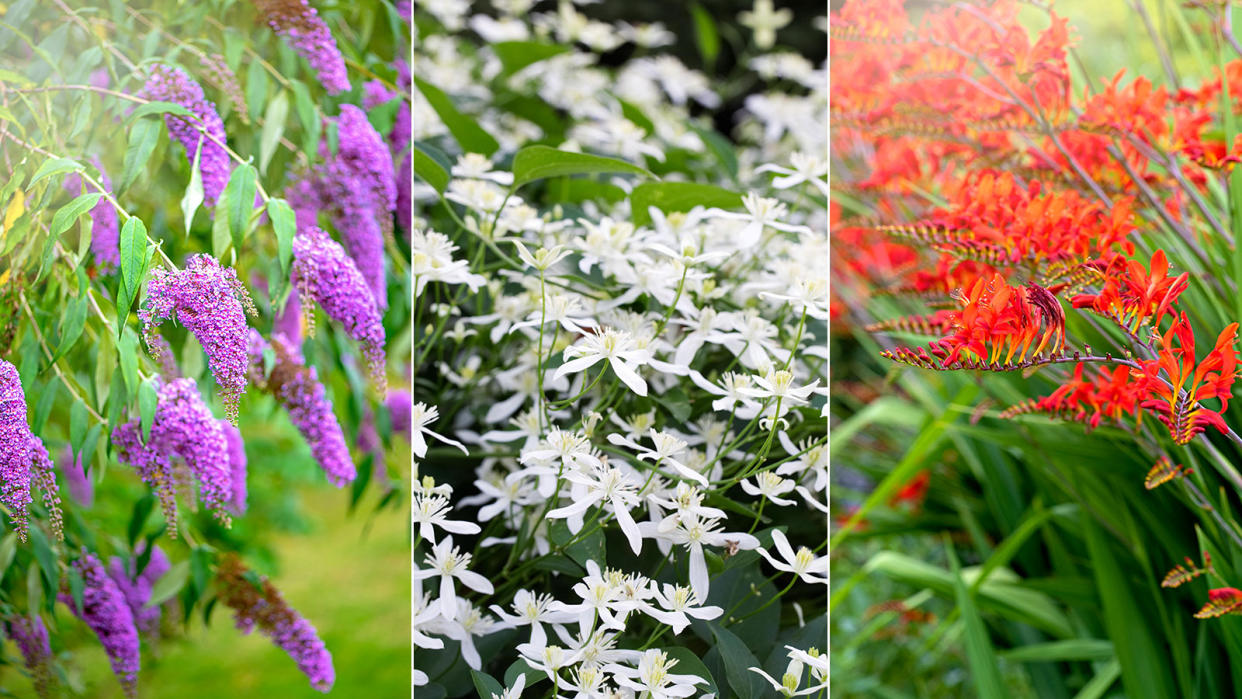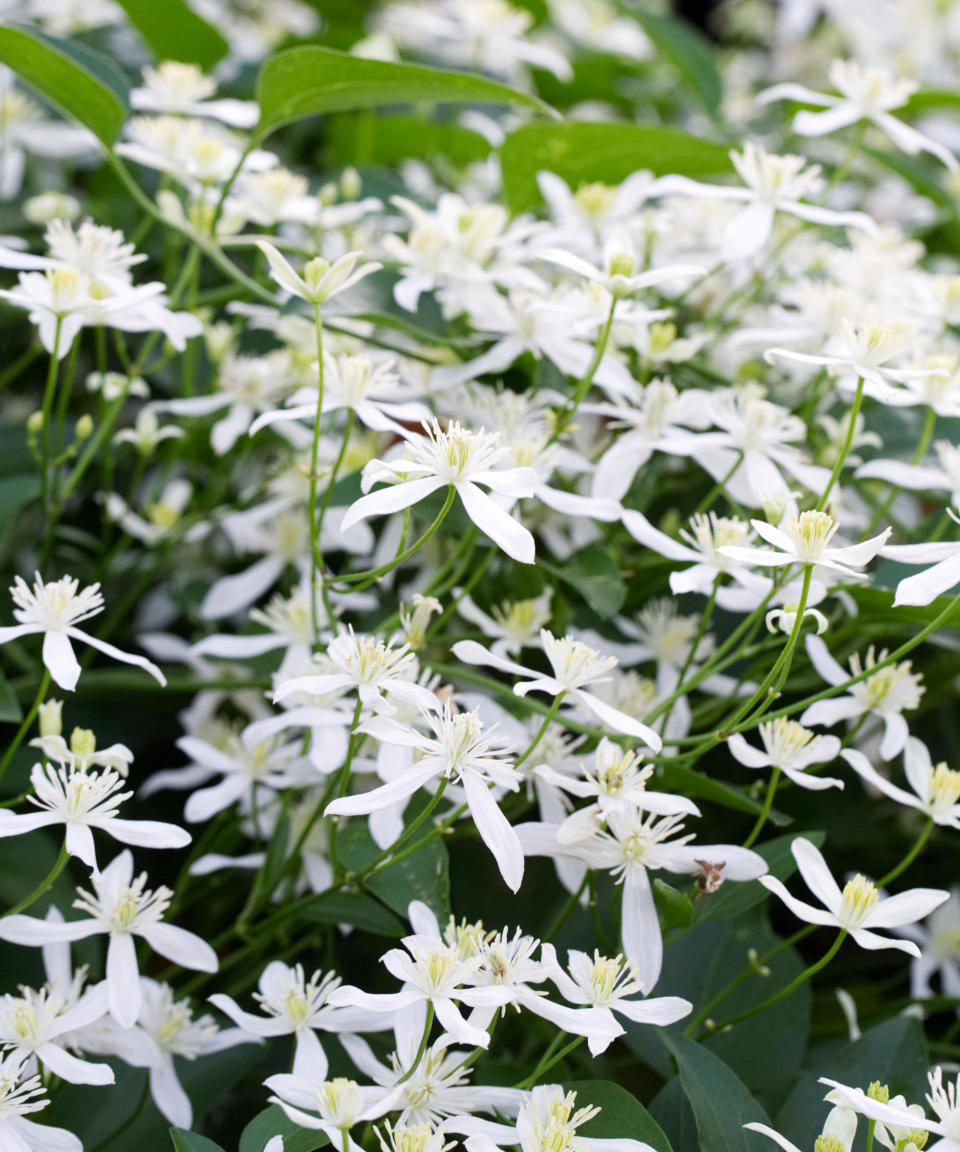8 tricky perennials to avoid in a small backyard – plus what to plant instead

When choosing plants for a small backyard, there are some tricky perennials that it might be best to avoid. While gardeners with expansive backyards have the luxury of experimentation, plants in smaller backyards need to be chosen carefully to avoid overwhelming the space.
If you don’t want to spend years pulling up shoots of invasive plants or struggling to remove aggressive or invasive growers, it's best to avoid these eight tricky perennials in your backyard.
Luckily, there are wonderful alternatives that will look just as good without the extra trouble.
Tricky perennials to avoid in a small backyard
The saying right plant, right place really does hold true for small backyards as you don't want a fast-growing perennial plant to get out of control and dominate your planting scheme.
It pays to think twice before opting for any of these fast-growing plants in a small space.
1. Wisteria

The stunning wisteria vine is famous for its delicate and colorful flowers that cascade downwards. They are especially popular for planting near pergolas or arches to create an ethereal living roof.
Unfortunately, wisteria vines are also incredibly aggressive and can quickly take over small gardens if given the space. Wisteria roots spread rapidly, and are known to smother nearby plants. The roots and vines can also damage nearby structures like walls or fences with ease.
One of the most common wisteria species, Chinese wisteria (Wisteria sinensis), is considered invasive in several states across the US – particularly in eastern states.
What to plant instead: Try planting Hydrangea petiolaris (climbing hydrangea), available from Nature Hills) which is also great for climbing structures but grows far slower.
2. Lily of the Valley

Convallaria majalis is a popular woodland plant perfect for shade gardens. It produces long stalks dotted with bell-shaped flowers that symbolize spring renewal, happiness and motherhood.
As pretty as the blooms are, lily of the valley is not ideal for small gardens. Spreading through rhizomes beneath the soil, this plant spreads quickly in the right conditions to completely overtake flower beds. Their underground spread also makes them difficult to remove, and you’ll likely notice new stalks popping up season after season in spring.
If you want to try growing lily of the valley in a small yard, they are suitable for container gardening as their spread can be contained in a pot.
What to plant instead: You can plant Snowdrops (Galanthus nivalis) which feature similar flowers without the aggressive growth habit. You can buy snowdrop bulbs and plants from Amazon.
3. Crocosmia

Native to sunny South Africa, crocosmia sports fiery flowers in yellow, orange and red. These pops of color not only benefit your backyard but butterflies and birds too. These flowers are known for attracting hummingbirds and helping grow local wildlife populations.
But, for those with small backyards, these benefits come at a cost. Many species are considered invasive due to their rapid growth and quick spread. Crocosmia crocosmiiflora (Montbretia) is one of the worst offenders, but there are several others that are best kept out of small spaces.
The University of Florida recommends planting named cultivars that are less likely to be invasive compared to regular species.
What to plant instead: Try planting Lobelia cardinalis (cardinal flower), available at Nature Hills. It has similar fiery flowers and the ability to attract hummingbirds.
4. Common Periwinkle

Commonly used as a ground cover plant in tough areas, Vinca minor is appreciated for its ability to quickly fill a space and produce adorable blooms, even in shady spots. Unfortunately, this rapid spread is also its biggest downfall.
Due to the popularity and wide availability of the plant, common periwinkle is grown in many parts of the northern hemisphere. Thanks to its rapid spread and ability to grow almost anywhere, it has escaped home garden cultivation, taking over native areas and threatening local species.
What to plant instead: Wild blue phlox (Phlox divaricata) enjoys similar conditions and sports the same color flowers, making it a great periwinkle replacement.
5. Sweet Autumn Clematis

Take a look at a list of fragrant flowers and sweet autumn clematis is likely to appear. This vine produces carpets of delicate blooms in summer and into fall that fill gardens with a sweet and intoxicating scent.
This fast-growing flowering vine can reach well beyond 10 feet tall when mature. But that’s not the only thing that makes it unsuitable for small gardens. Clematis terniflora also smothers nearby plants and spreads via seed to new spots in your garden and beyond.
What to plant instead: Other clematis species also grow vigorously and can become quite tall, but aren’t considered invasive like Clematis terniflora. Choose one of these, or opt for one that is better suited to small gardens, such as Boulevard? Alaina clematis, available from Nature Hills. Alternatively, you could grow jasmine vines instead for a similar sweet scent.
6. Butterfly Bush

Buddleia davidii is a perennial garden favorite with bright blooms in several colors across different cultivars. Purple is the most recognizable color, especially when those blooms are covered in the butterflies they are known to attract.
Despite the pollinator-attracting benefits, experts recommend avoiding butterfly bush completely, especially in small gardens. Not only is the plant large, but this fast-growing shrub self-seeds to spread throughout the garden and into local habitats, replacing native plants.
What to plant instead: Another perennial known for attracting butterflies is echinacea (coneflower). The blooms come in a range of colors, allowing you to choose the perfect cultivar for your space and the butterflies in your area. You can shop echinacea seeds at Amazon.
7. Lamb's Ear

I will be the first to admit that I find fluffy lamb’s ear (Stachys byzantina) completely irresistible. The soft foliage and gentle gray color complement so many other perennials and the compact size is perfect for bed borders.
However, lamb’s ear stems can develop roots and spread along beds if they are exposed to soil. On top of that, they also self-seed to spread to other parts of your garden. Although they may not be officially declared invasive in many regions, their rapid spread is still not ideal for smaller gardens.
What to plant instead: Mexican bush sage (Salvia leucantha), available at Nature Hills, is my favorite replacement that can be used to fill space or pruned to remain compact in smaller gardens. The purple blooms have a similar fluffy texture and are great for attracting pollinators.
8. Obedient Plant

Physostegia virginiana is a North American native with an interesting common name – obedient plant. This name comes from the stems that will remain in place if moved or blown over. Its other common name, false dragonhead, originates from the resemblance to snapdragon flowers.
The stems may be obedient, but when it comes to spread, this plant is anything but. Physostegia virginiana spreads vigorously and is incredibly difficult to remove – not an ideal choice for those with limited space.
What to plant instead: Luckily, if you like the look of this native species, you can simply choose another cultivar with a less damaging spread. ‘Miss Manners’ (available from Nature Hills) is a great choice with a limited spread and compact size, ideal for small gardens.
FAQs
What's the most invasive perennial?
Invasive perennials are specific to the area and climate you live in. Some are more invasive in warm regions, while others spread rapidly no matter the conditions.
To determine which perennials are invasive in your area, check your local extension service to ask for their advice.
When planning a small garden, making the right flower choices is a key part of the design process. Pretty, flower-filled borders are always an appealing option, but it pays to do your research and avoid tricky perennials that could quickly take over a small space due to their fast-growing or invasive nature.
The good news is there are plenty of alternatives to consider in their place, or you could also think about planting them in pots to restrict their growth.
